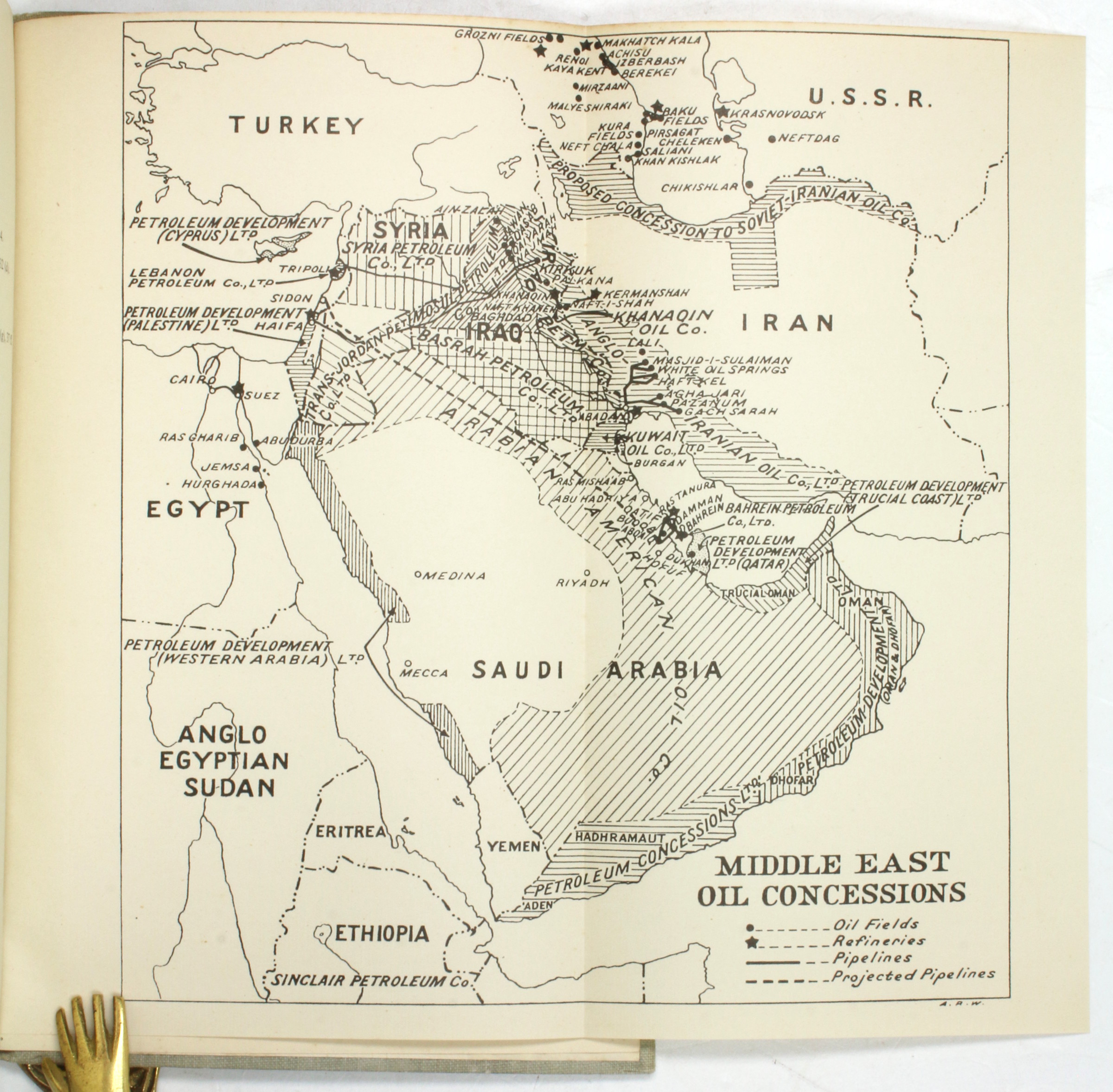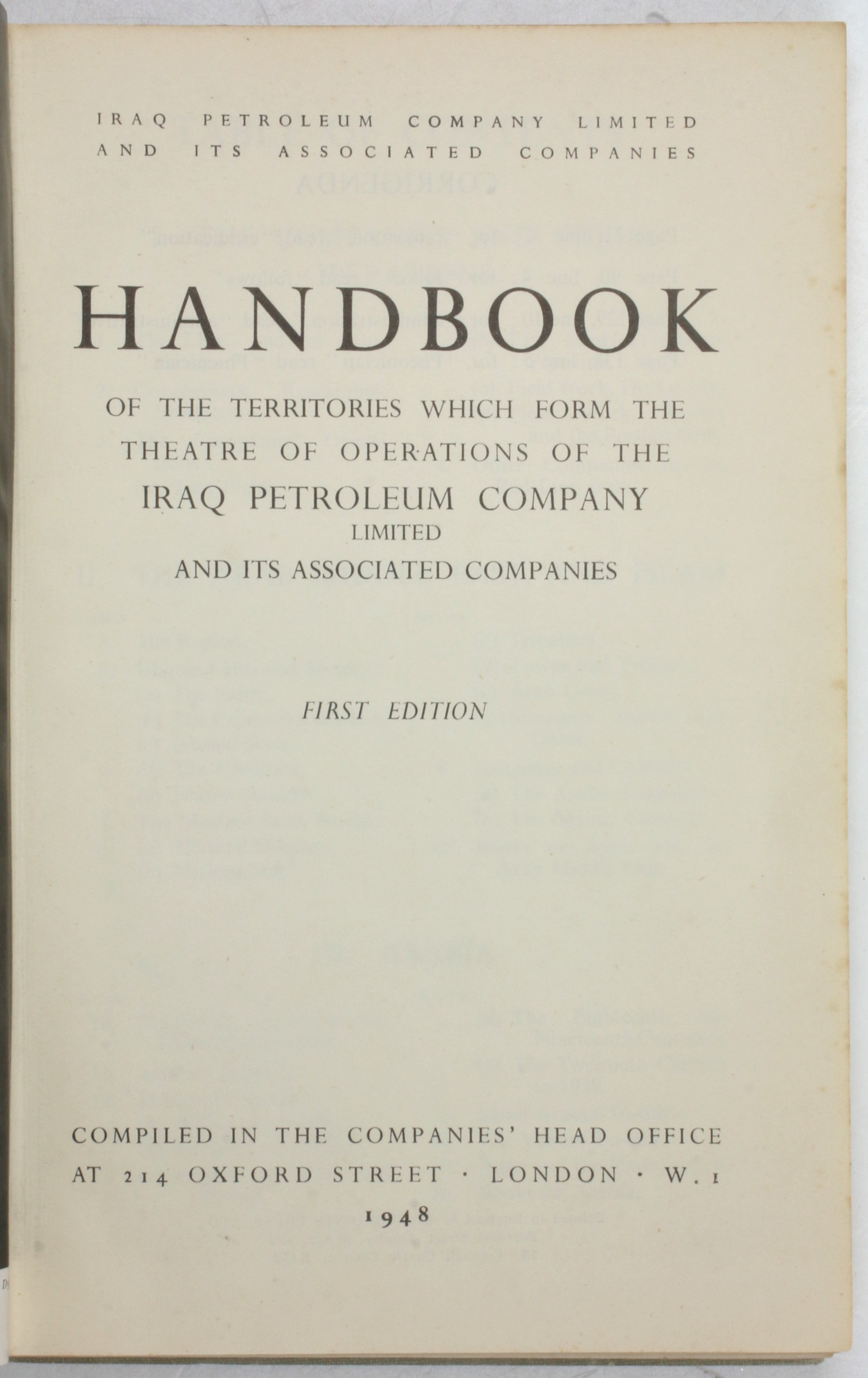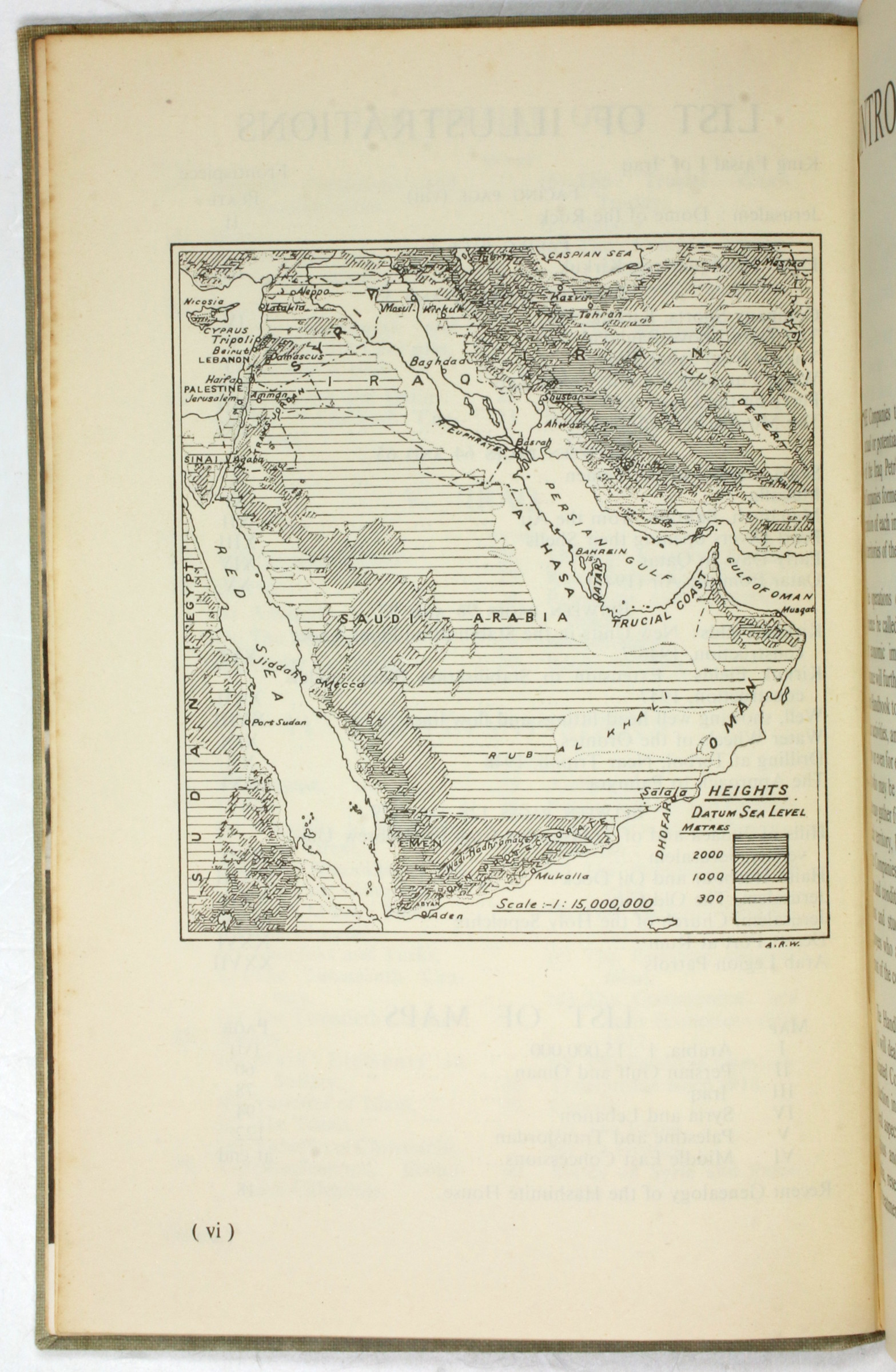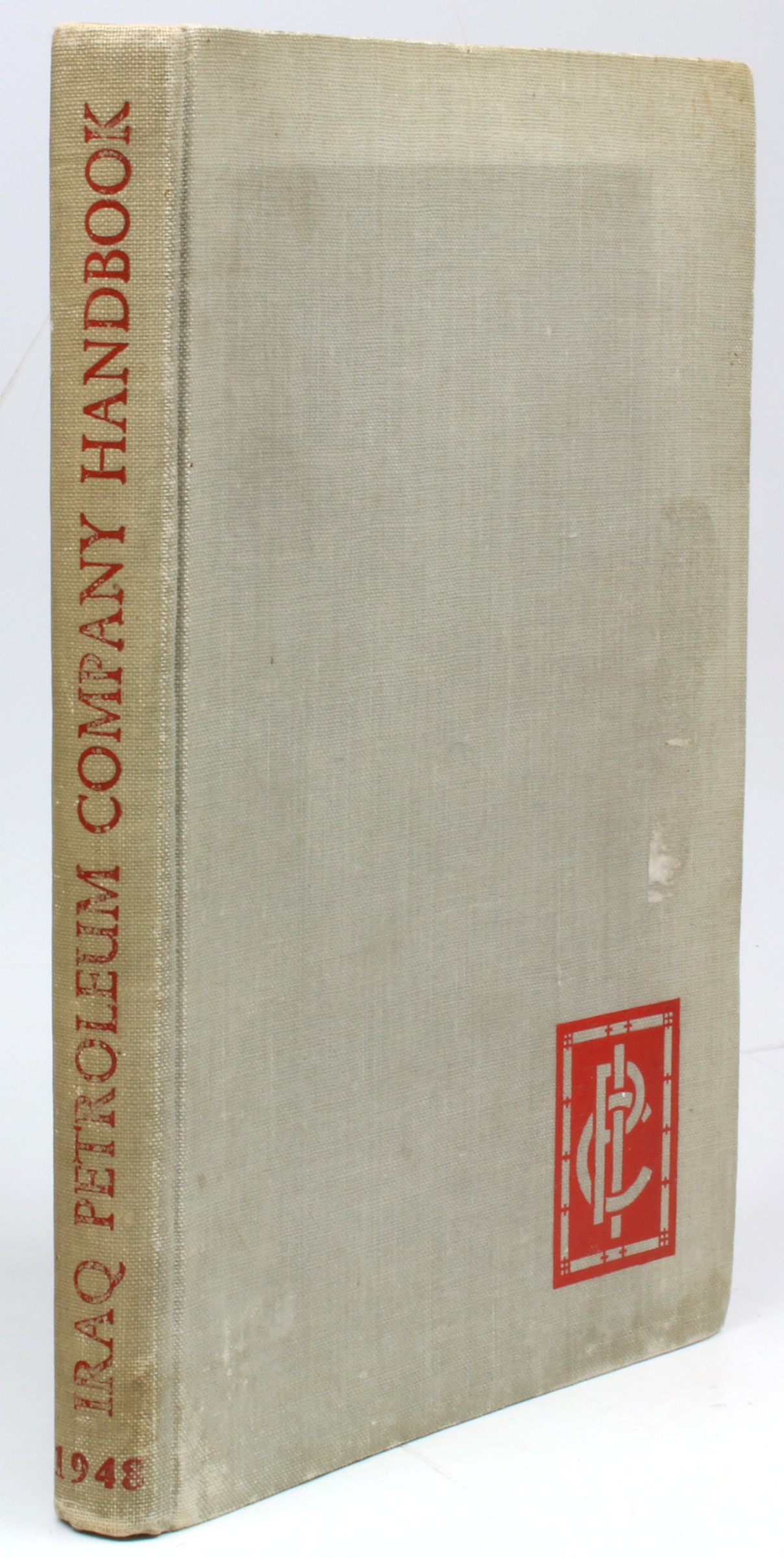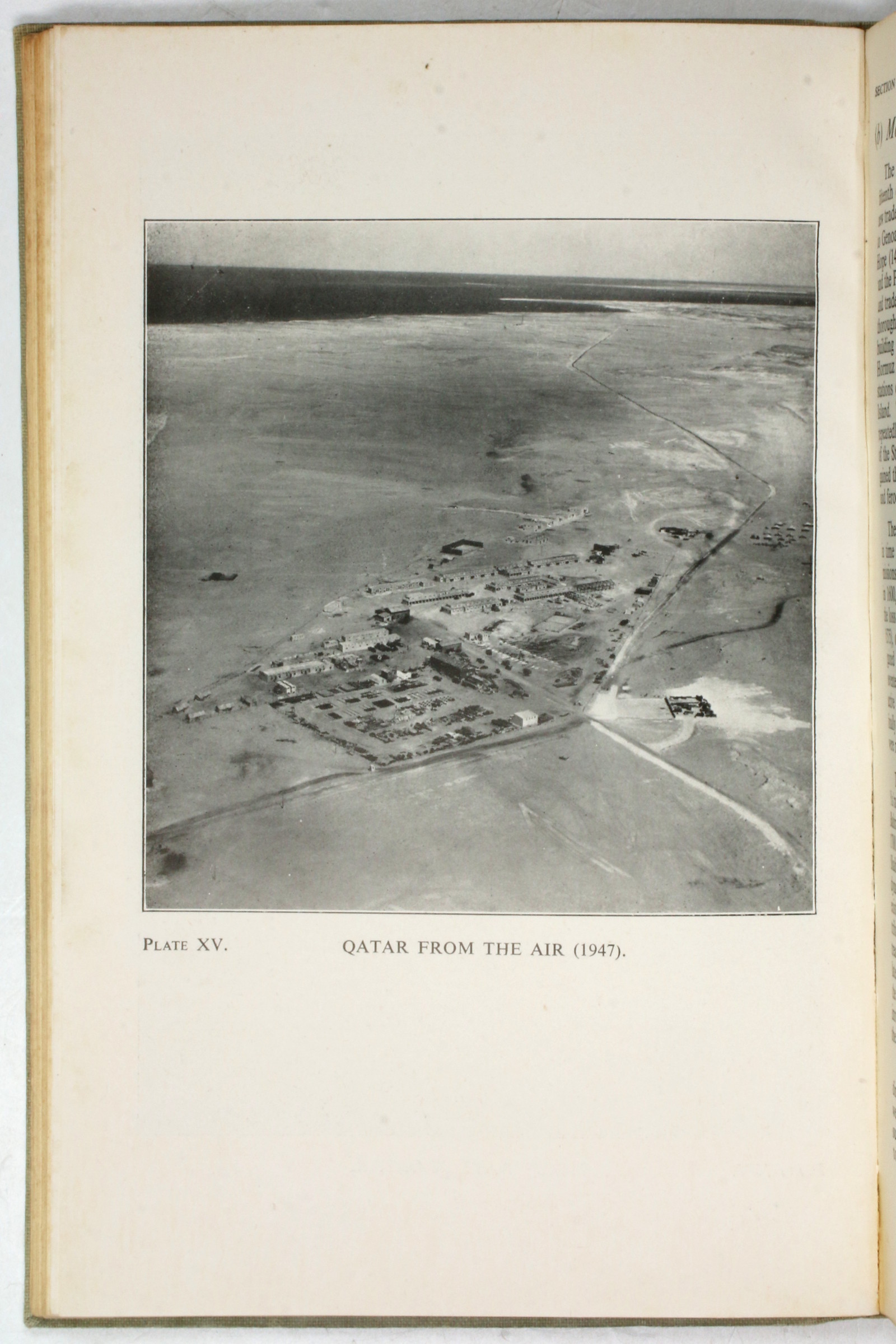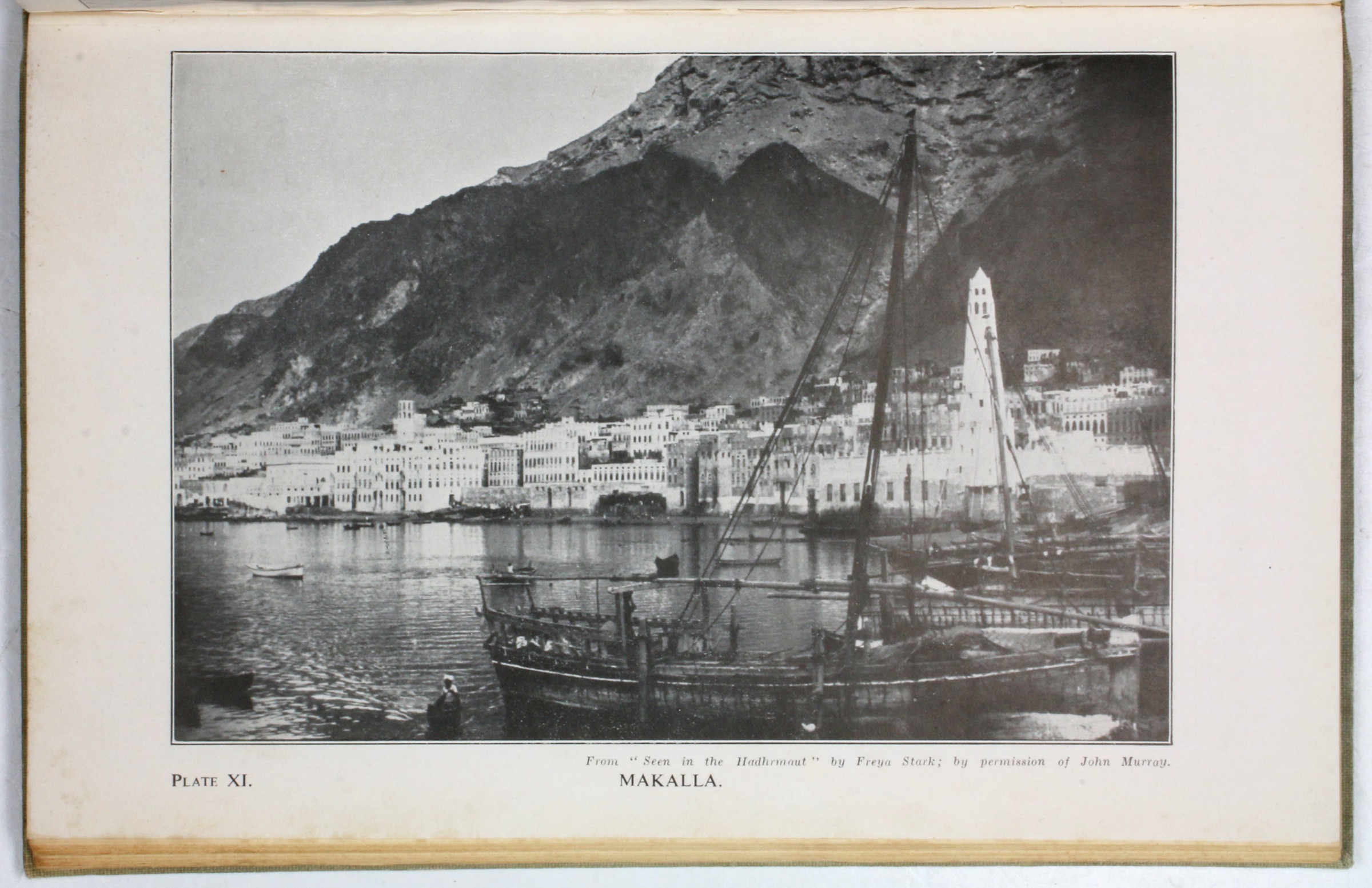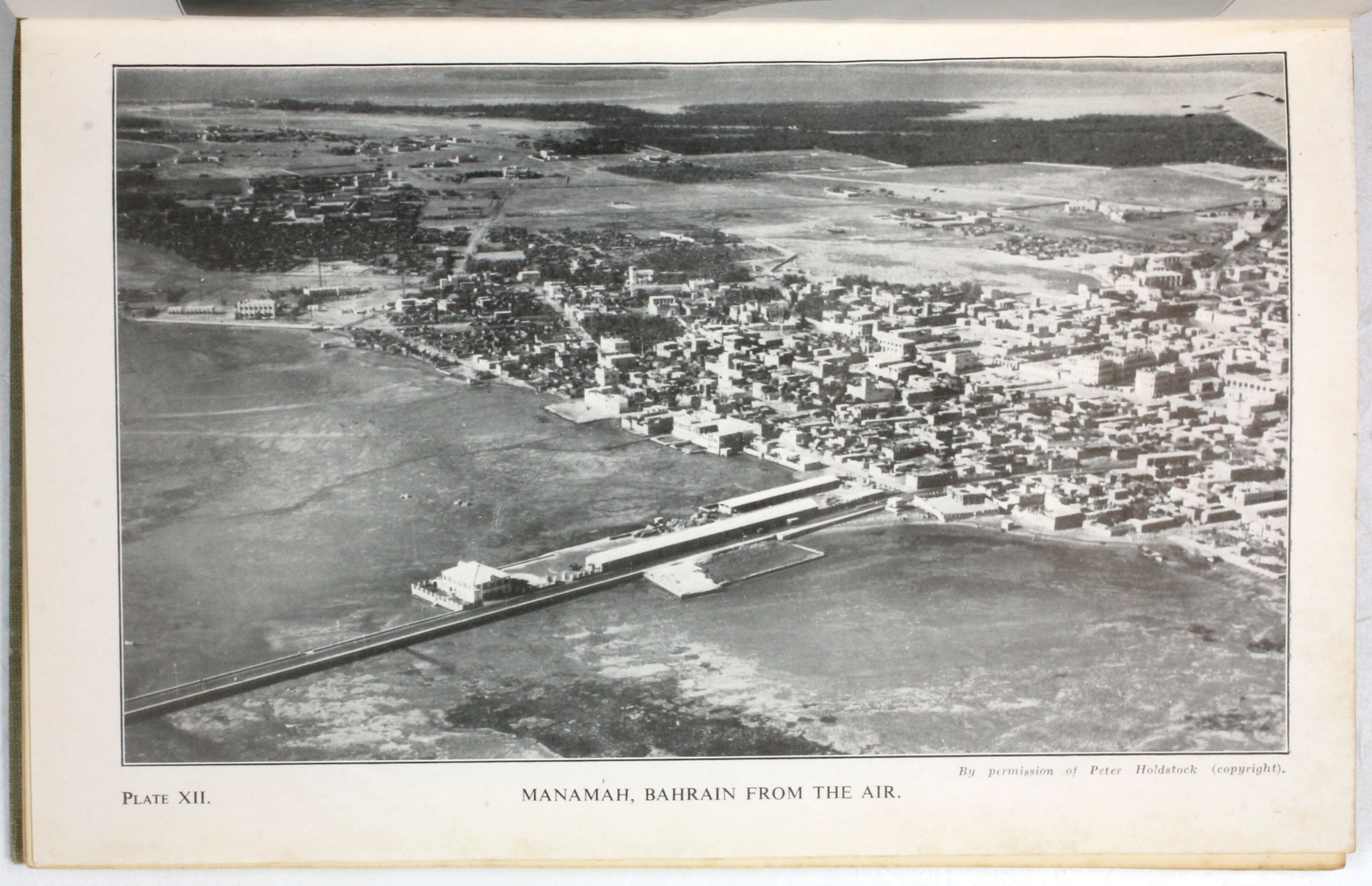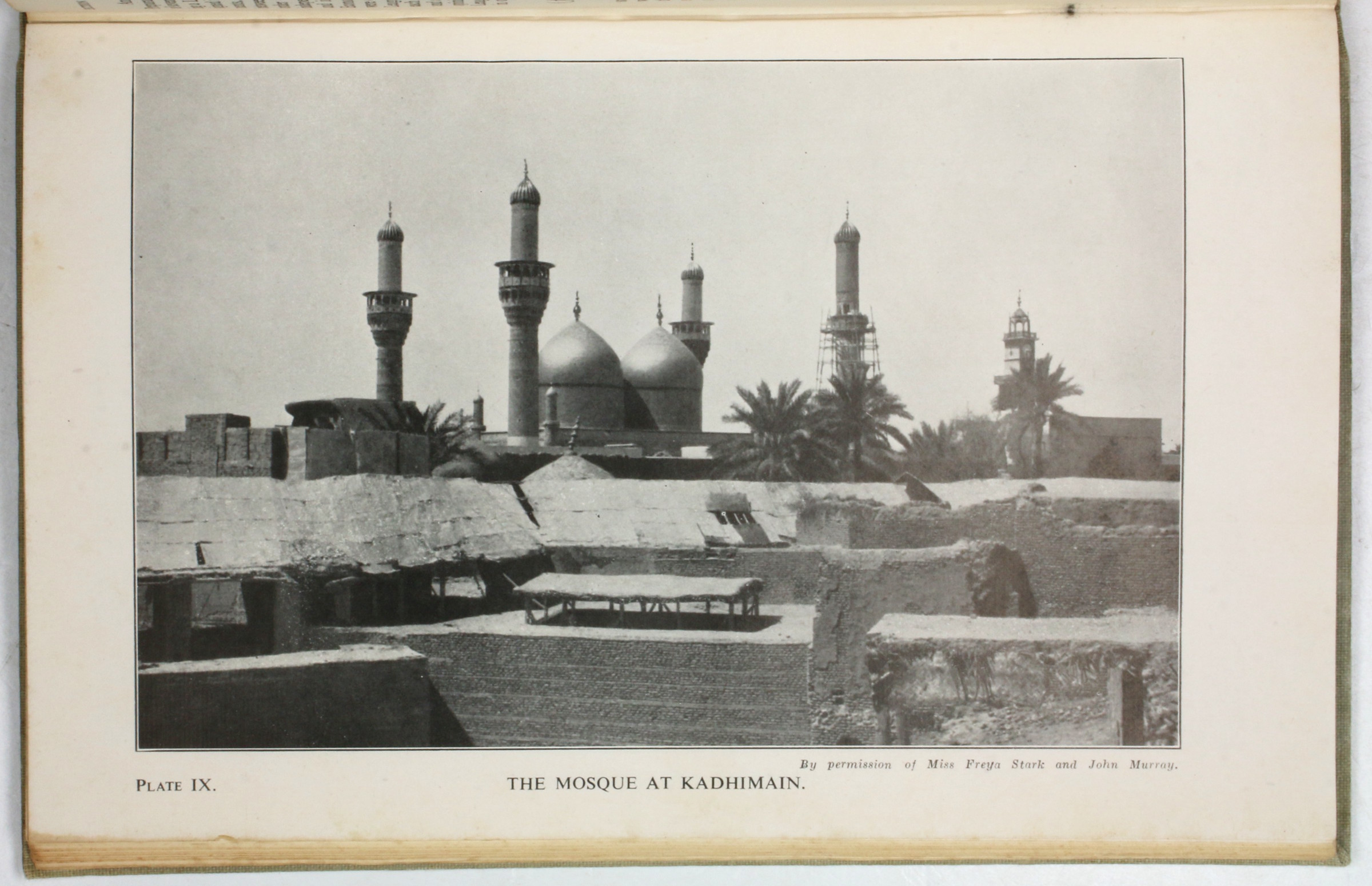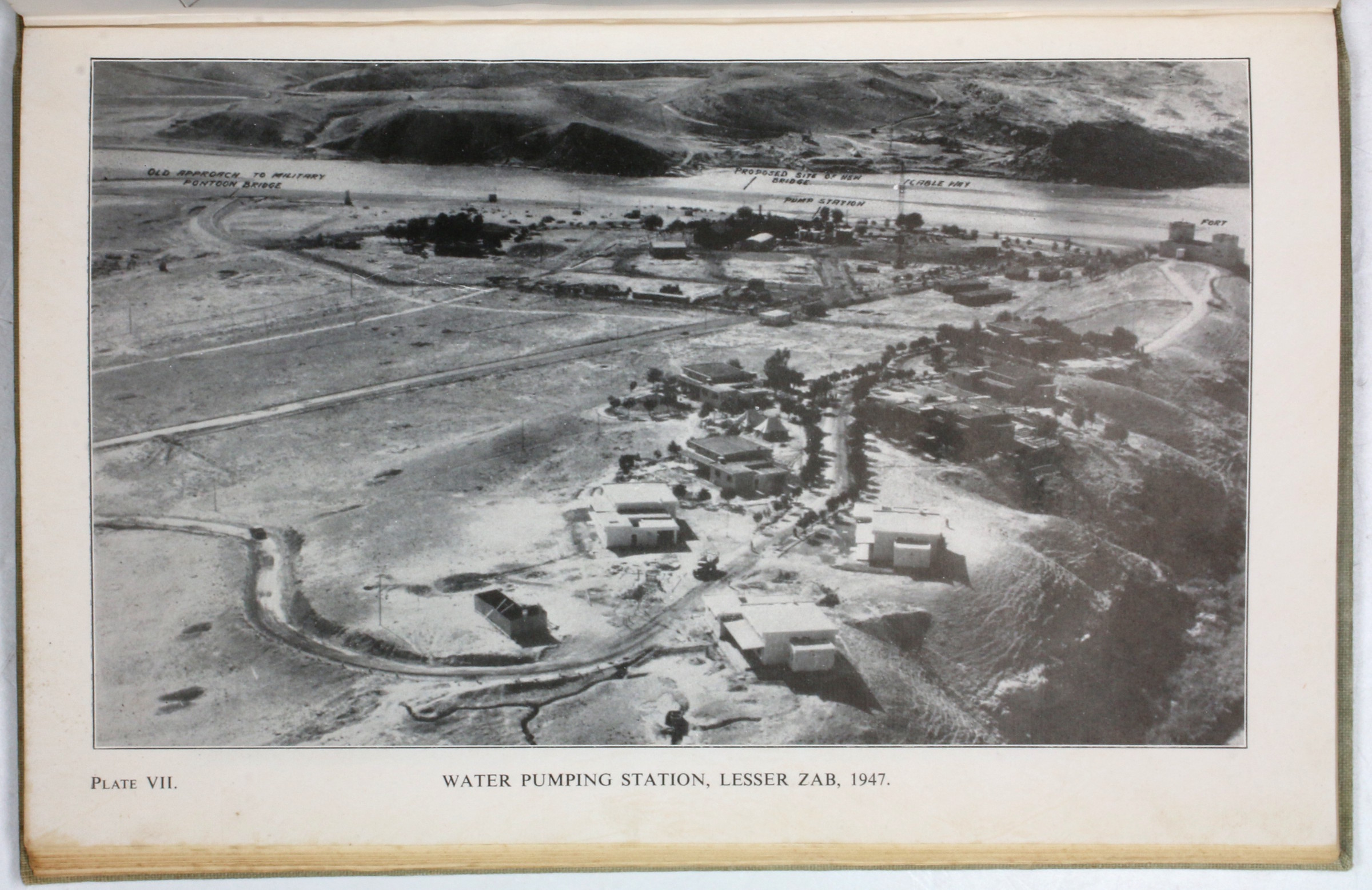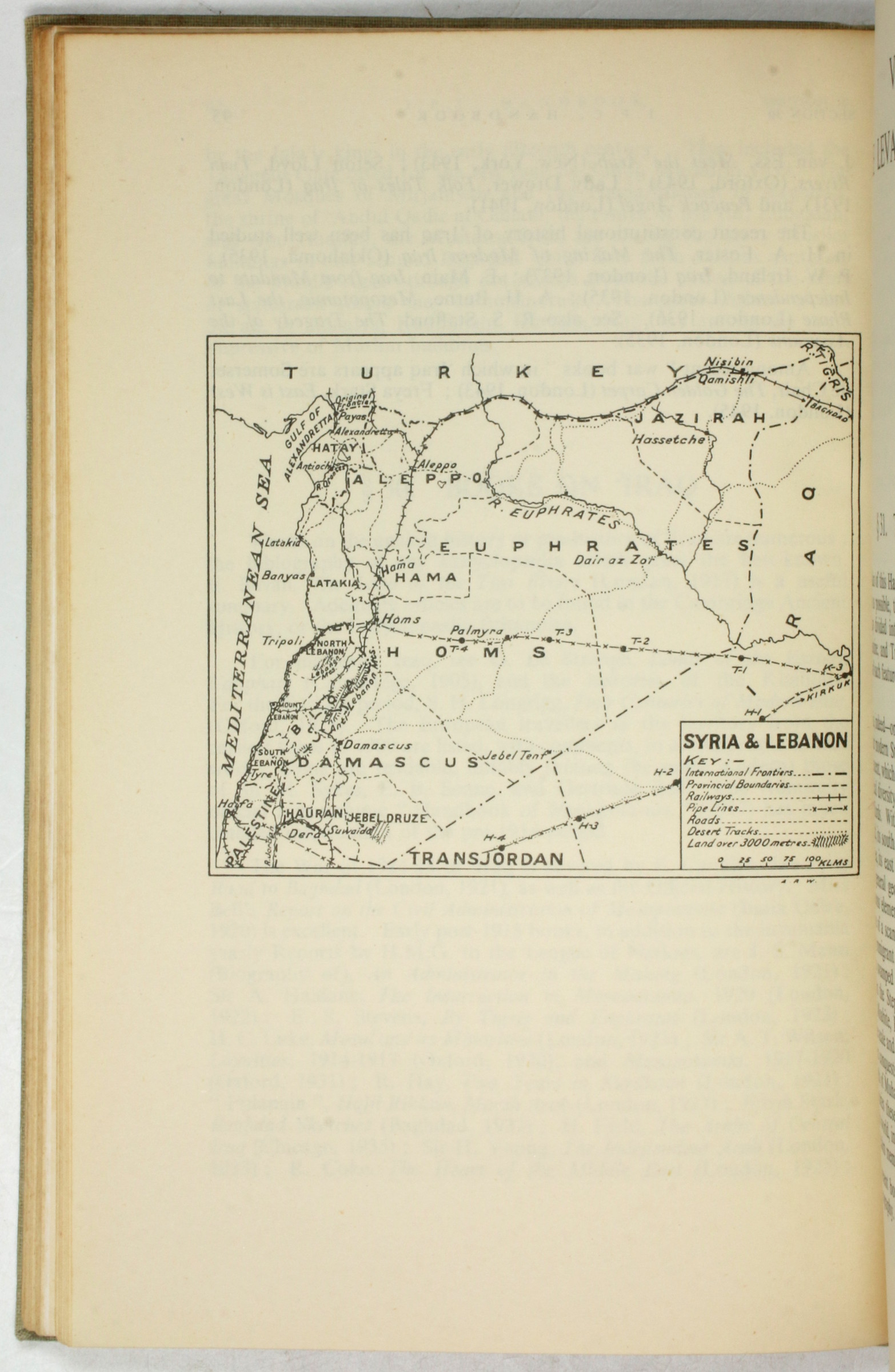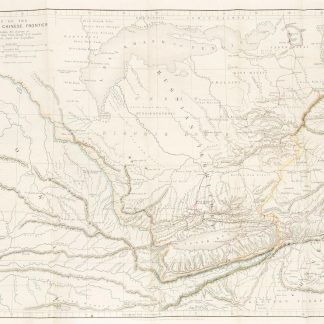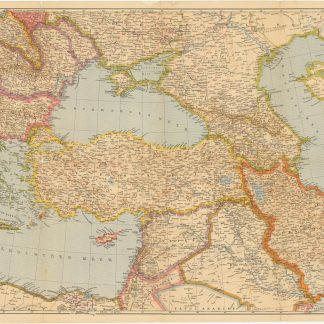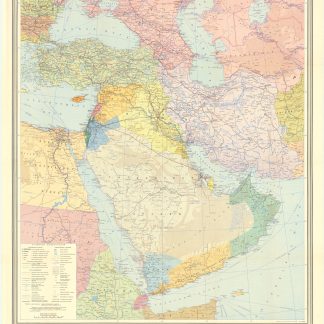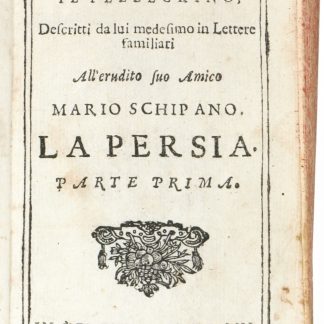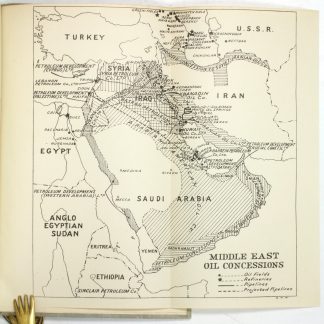"The bulk of the inhabitants of Dubai territory belong to the tribe of Al Bu Falasah, a branch of the Bani Yas"
Handbook of the Territories Which Form the Theatre of Operations of the Iraq Petroleum Company Limited and its Associated Companies.
8vo. VIII, 152 pp. With 27 numbered plates, including a frontispiece of King Faisal I, and one folding map of oil concessions in the Middle East. Original full cloth with stamped spine-title and IPC emblem to front cover.
€ 4,500.00
First edition of this excellent handbook issued for employees of the Iraq Petroleum Company. An overview of the Middle Eastern regions emerging as the great oil exporting countries of the century: Saudi Arabia, Yemen, Bahrain, the then Trucial Coast (now the UAE) and Qatar, including the "Hinterland Tribes", Oman, and Kuwait, as well as Iraq and the Levant. Providing details of the companies, the local geography, climate, culture, and political history, this forms an invaluable compendium on the region and ruling personalities as they presented themselves in the immediate postwar years: "The Shaikhdom of Abu Dhabi is in size of territory by far the largest of the Trucial Coast [...] The ruler, Shaikh Shakhbut bin Sultan of the Al Bu Falah, is a quiet, nervous personality. He has three brothers, Hazza', Khalid and Za'id, of whom the last named is probably the outstanding and most influential person in the whole of Trucial Oman. Shaikh Za'id, a grandson of the well-remembered Za'id bin Khalifah, is the ruler's representative in Baraimi and responsible to his brother for political relations with the interior tribes. It is through him that the Al Bu Falah exert their very considerable influence with the bedouin, with which no other Shaikhdom on the Trucial Coast can compete [...] The village of Abu Dhabi is situated on a barren island off the coast and is not visited by steamers [...] The bulk of the inhabitants of Dubai territory belong to the tribe of Al Bu Falasah, a branch of the Bani Yas. The Shaikh's authority is largely confined to the coast. Dubai creek has been used as a landing-place for flying boats [...]".
Further, the handbook describes the infancy of oil production in Qatar up to 1948, stressing its benefit for the otherwise poorly developed infrastructure: "The building of necessary roads, jetties, dwellings, offices, workshops, stores and the like has advanced simultaneously with drilling. A new producing well was completed in January, 1948, another in May, and others are in hand". However, the Handbook goes on to observe that "the population is scanty and wretchedly poor. The Company's present operations supply almost the sole source of wealth in the territory. Dohah [sic] is the Shaikh's capital and the only considerable village". The illustrations include fascinating aerial photographs of Qatar and Manama (Bahrain) in the 1940s, along with images of Qatar as a pearl fishing town, titled "Early days in Qatar", views of the Kirkuk fields, landmarks of Jerusalem, and a portrait of King Faisal I of Iraq.
The Iraq Petroleum Company (IPC) had a virtual monopoly on all oil exploration and production in Iraq from 1925 to 1961. It was involved in other parts of the Middle East, and played a major role in the discovery and development of oil resources in the region. IPC operations were taken over by the Iraq National Oil Company after they were nationalised by the Ba'athist government in June 1972.
Binding somewhat toned; spine faintly rubbed. Interior in excellent condition.
OCLC 5464854. Not in Macro.

